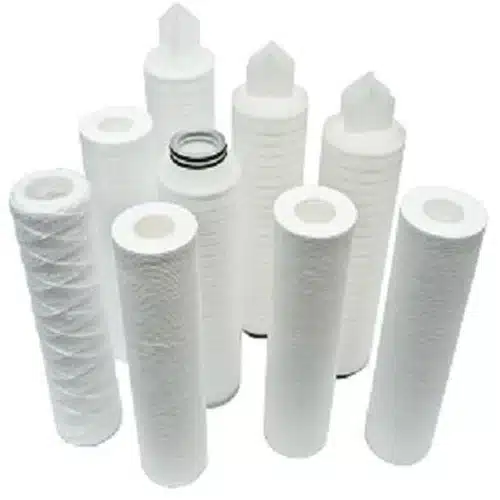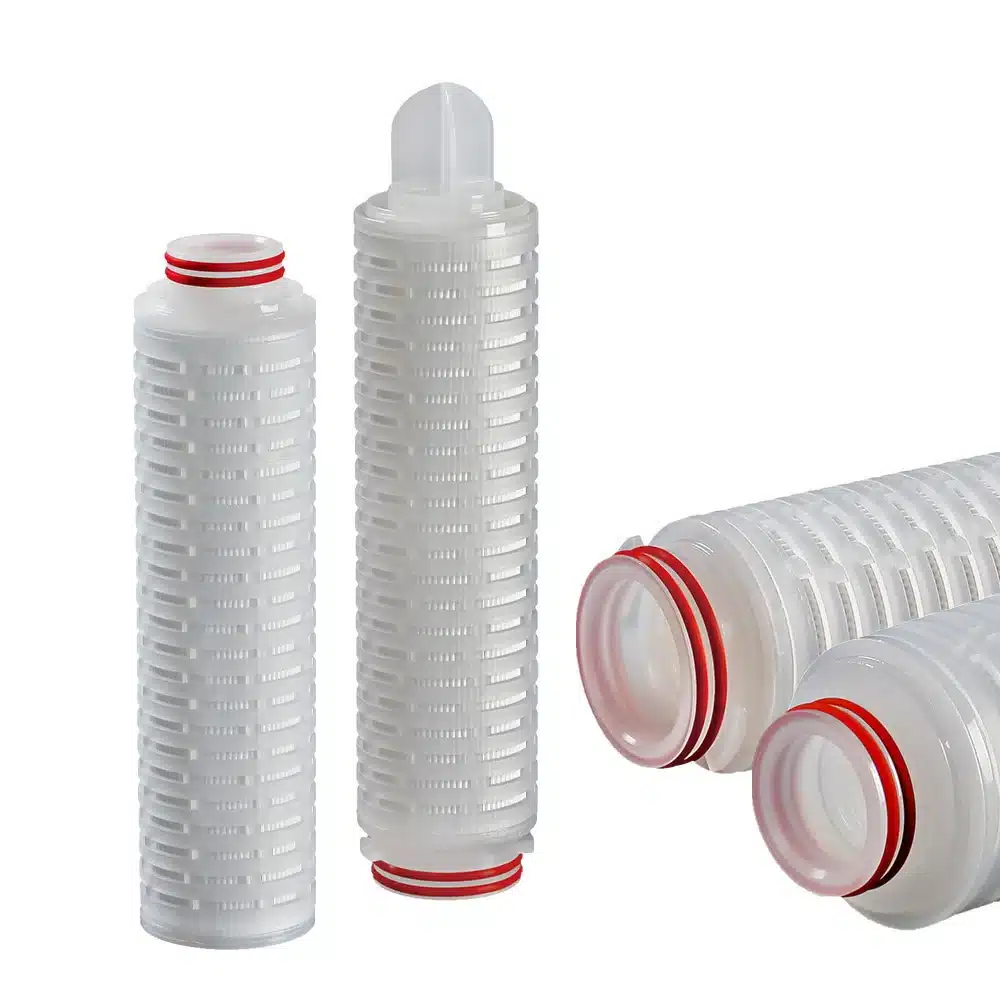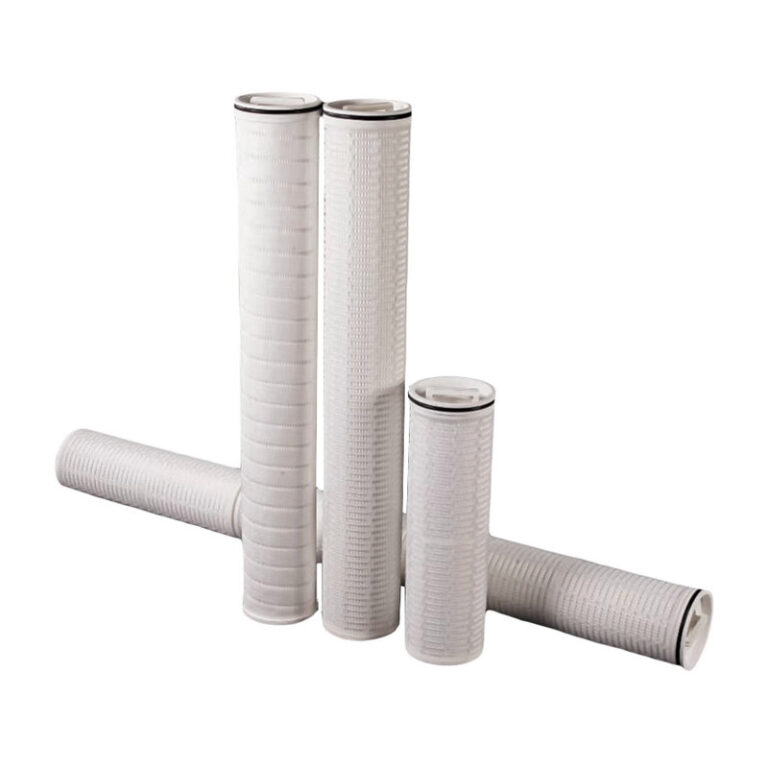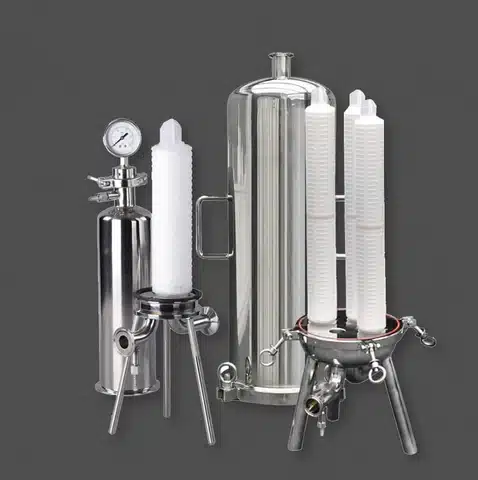Why Filters Cartridge Require Bubble Point Integrity Test and Its Importance
INTRODUCTION
Membrane Filters are an essential part of modern industrial operations, playing a central role in safeguarding product quality, process efficiency, and consumer safety. Whether used in pharmaceutical manufacturing, food and beverage processing, water treatment plants, microelectronics fabrication, or chemical production, filter cartridges ensure that unwanted particles, microorganisms, and contaminants are removed from liquids and gases before they reach critical production stages.
However, installing filters alone does not guarantee successful filtration. Their performance must be verified to ensure that they are functioning as intended. This is particularly true for applications where even a small deviation in pore size or a minor structural defect can result in contamination, regulatory non-compliance, or costly production failures.
One of the most widely recognized and reliable ways to validate filter performance is the bubble point test. This test serves as a cornerstone of filter integrity testing across industries. It helps manufacturers, quality managers, and engineers confirm that a filter is structurally sound, that its pore size distribution is accurate, and that it is capable of delivering the required retention efficiency.
In this comprehensive article, we will explore why filters require bubble point testing, how the test is performed, its advantages, applications in different industries, and why it remains one of the most important integrity tests in filtration science.
What is Bubble Point Filter Integrity Test?
The bubble point test is a non-destructive filter integrity test that measures the largest pore size of a filter. It is based on the principle of gas displacing liquid inside filter pores.
How It Works:
Wetting the Filter: The filter element (such as a membrane filter cartridge or pleated filter cartridge) is fully saturated with a wetting liquid, commonly water, alcohol, or a water-alcohol mixture. The liquid fills the pores and creates surface tension.
Applying Gas Pressure: A gas, typically compressed air or nitrogen, is applied gradually to the upstream side of the wetted filter.
Observation of Bubbles: At a certain pressure, the gas begins to displace the liquid in the largest pores. Once this happens, a continuous stream of bubbles is observed at the downstream side.
Determination of Bubble Point Pressure: The pressure at which this occurs is the bubble point pressure. This pressure is inversely proportional to the largest pore size—the smaller the pores, the higher the bubble point.
This correlation between bubble point pressure and pore size allows users to verify whether the filter is capable of providing the required retention efficiency (for example, bacterial removal or particle retention at a certain micron rating).
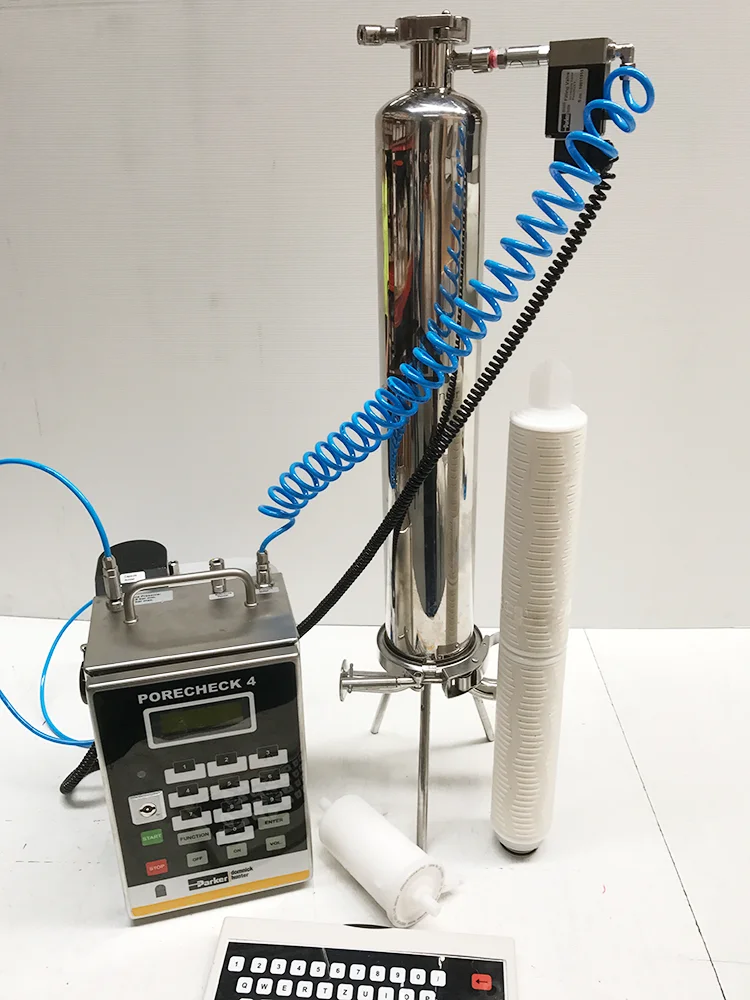
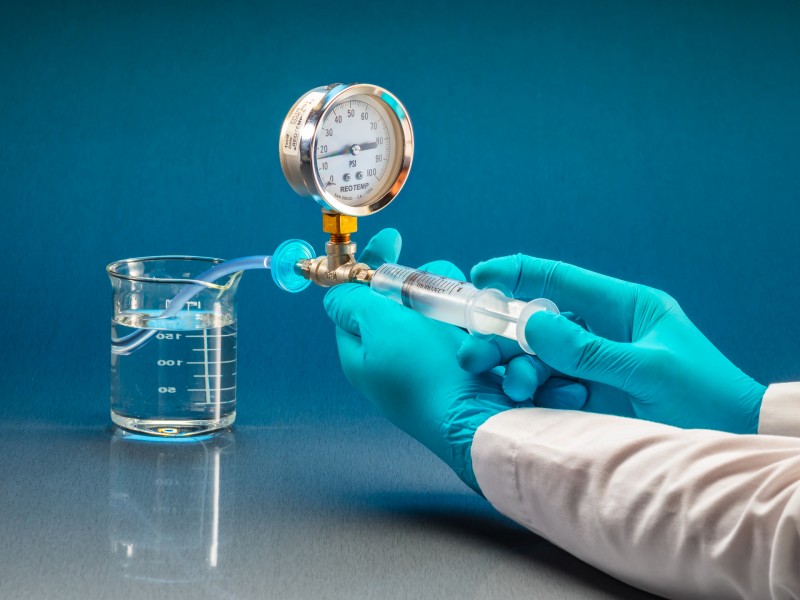
Why Filter Cartridges Require Bubble Point Test
The bubble point filter integrity test is a non-destructive integrity test used to determine the pore size and structural soundness of a membrane filter or pleated filter cartridge. The principle is straightforward:
1. Verifying Structural Integrity
Filters can develop defects during:
Manufacturing – caused by uneven pore distribution or weak membrane bonding.
Transportation – due to mechanical shocks or improper packaging.
Installation and Use – from overtightening, improper handling, or exposure to aggressive chemicals.
Even small defects, such as pinholes, cracks, or sealing issues, can compromise filter integrity. Bubble point testing provides a simple yet effective way to detect such issues before filters are used in critical processes.
2. Ensuring Accurate Filtration Performance
A filter’s rated pore size is a promise that it will retain particles or microorganisms above a certain size threshold. If the actual pore size distribution deviates, the filter may fail to perform. Bubble point testing directly measures pore size consistency, ensuring that filters meet their stated specifications.
For example:
A 0.2-micron filter in pharmaceutical applications must be capable of retaining bacteria such as Brevundimonas diminuta. Bubble point testing verifies this retention ability before use.
A 0.45-micron filter used in beverage clarification must remove particles that affect taste and clarity. Bubble point testing confirms the filter will perform reliably.
3. Supporting Regulatory Compliance
Industries such as pharmaceuticals, biopharmaceuticals, and food processing are governed by strict international standards, including:
FDA (Food and Drug Administration) guidelines
GMP (Good Manufacturing Practices) requirements
ISO (International Organization for Standardization) certifications
These guidelines often mandate filter integrity testing to ensure sterility and product safety. Bubble point testing, as an internationally recognized method, allows companies to demonstrate compliance during audits and inspections.
4. Quality Assurance for Manufacturers and Users
For filter manufacturers, bubble point testing is part of routine quality control before shipping filters to customers. For end users, performing the test before and after use provides assurance that the filter has not been compromised during operation. This two-step approach—pre-use and post-use bubble point testing—ensures both system reliability and traceability.
5. Cost-Effective and Non-Destructive
Because bubble point testing does not damage the filter, it offers significant cost advantages. Unlike destructive methods (such as burst testing), filters remain usable after validation. This makes it ideal for industries that rely on high-value sterile filters and cannot afford waste.
How Bubble Point Testing Is Performed
Manual Bubble Point Test
Traditionally, operators performed the bubble point test manually by immersing the downstream side of the filter in water and visually observing the formation of bubbles. While effective, this method depends on human judgment and may lack precision.
Automated Bubble Point Test
Modern industries now use automated integrity testing instruments. These devices apply controlled pressure, detect bubbles electronically, and record results with minimal human error. Automated systems:
Improve accuracy and repeatability
Provide data logging for regulatory audits
Reduce test time and labor costs
Learn More: Step-by-Step Procedure for Bubble Point Filter Integrity Test
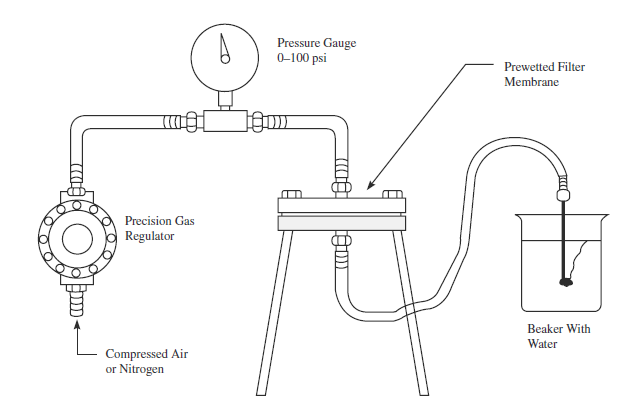
Bubble Point Test for Different Types of Filters
The bubble point test is widely used across multiple filter types, but the exact testing method may vary depending on the filter material and design:
1. PES Membrane Filter Cartridges
PES membranes are hydrophilic, making them easy to wet with water.
They typically show consistent bubble point values due to their uniform pore size distribution.
Ideal for applications in biopharmaceuticals and food & beverage, where precise microbial retention is required.
The bubble point test provides reliable verification of sterility assurance.
2. PVDF Membrane Filter Cartridges
PVDF membranes are naturally hydrophobic, often requiring alcohol-water pre-wetting before testing.
After proper wetting, the bubble point test confirms pore integrity for pharmaceutical and high-purity water systems.
PVDF membranes generally show higher bubble point pressures due to tighter pore structures and strong solvent compatibility.
3. PTFE Membrane Filter Cartridges
PTFE membranes are strongly hydrophobic, requiring wetting agents such as isopropyl alcohol (IPA) before testing.
Commonly used in air, gas, and aggressive chemical filtration.
The bubble point values are typically higher than hydrophilic membranes, ensuring excellent retention of fine particles and microorganisms.
Test results are especially critical in sterile vent filtration.
4. Nylon Membrane Filter Cartridges
Nylon membranes are naturally hydrophilic but have a higher affinity for water compared to PES.
Their bubble point values are stable and reproducible, making them suitable for pharmaceutical liquids, food, and laboratory-grade water.
Bubble point testing helps confirm performance in applications requiring low extractables and consistent flow rates.
5. Depth Filters (e.g., Melt-Blown or String-Wound Filter Cartridges)
Application: Pre-filtration in industrial and chemical processes.
Testing Method: Bubble point testing is less effective for depth filters because of their irregular pore structures. Instead, integrity is usually verified using challenge tests or alternative methods such as pressure hold
In summary, while membrane filters and pleated cartridges are most commonly validated using bubble point tests, hydrophobic and depth filters may require modified methods or alternative integrity testing techniques. Choosing the correct test method depends on filter design, material, and application.
Industry Applications of Bubble Point Testing
1. Pharmaceutical and Biopharmaceutical Industry
Ensures sterile filtration for injectable drugs, vaccines, and biologics.
Demonstrates compliance with FDA and GMP standards.
Reduces contamination risks in life-critical products.
2. Food and Beverage Processing
Protects product flavor, aroma, and clarity.
Used in microbial stabilization of beer, wine, dairy, and bottled water.
Prevents spoilage by verifying filter performance before bottling.
3. Water Treatment and Ultrapure Water Systems
Confirms safety of municipal drinking water supplies.
Guarantees purity in ultrapure water used in pharmaceuticals and electronics.
4. Microelectronics and Semiconductor Fabrication
Prevents particles from contaminating microchips and circuits.
Ensures ultrapure water and chemicals remain free of contaminants.
Reduces product defects in high-tech industries.
5. Chemical Processing
Validates filter reliability in aggressive chemical environments.
Prevents costly downtime caused by contamination.
Ensures consistent product quality in sensitive processes.
Advantages of Bubble Point Testing
Accurate correlation between pore size and bubble point pressure
Non-destructive, allowing reuse of filters after testing
Internationally accepted for regulatory compliance
Quick and efficient, especially with automation
Applicable across multiple industries
Improves product safety and reduces risk of recalls
Bubble Point Testing vs. Other Integrity Tests
While bubble point testing is widely used, other filter integrity tests include:
Diffusion Test: Measures gas flow through wetted pores at pressures below the bubble point.
Pressure Hold (Decay) Test: Measures the rate of pressure drop over time in a pressurized system.
Water Intrusion Test: Commonly used for hydrophobic filters.
Compared to these, bubble point testing is faster and provides a direct relationship between pore size and test results, making it the preferred method in many industries.
Future of Bubble Point Testing in Filtration
With growing regulatory requirements, demand for traceability, and rising concerns about product safety, the role of bubble point testing is expanding. Emerging trends include:
Integration with digital monitoring systems for real-time validation.
Automated and AI-enhanced instruments to reduce human error.
Hybrid integrity tests combining bubble point with diffusion testing for higher reliability.
Conclusion
The bubble point test is more than just a technical procedure—it is a cornerstone of filtration validation. By confirming pore size, detecting defects, ensuring regulatory compliance, and safeguarding against contamination, bubble point testing provides industries with confidence that their filters will perform reliably.
From pharmaceuticals and food safety to microelectronics and water purification, filters cannot be trusted without verification. That is why bubble point testing remains one of the most essential integrity tests in modern filtration science.
For industries where safety, purity, and reliability are non-negotiable, bubble point testing is not just important—it is indispensable.
References and Authoritative Sources
To enhance the article’s credibility and SEO authority, you can cite industry-recognized organizations and technical standards. Suggested references:
Step-by-Step Procedure for Bubble Point Filter Integrity Test – Econe Filtration
ASTM International – ASTM F316-03(2019): Standard Test Methods for Pore Size Characteristics of Membrane Filters by Bubble Point and Mean Flow Pore Test
U.S. Food and Drug Administration (FDA) – Guidance for Industry: Sterile Drug Products Produced by Aseptic Processing — Current Good Manufacturing Practice
Pall Corporation – Filter Integrity Testing Technical Guide
Pall Integrity Testing Resources
MilliporeSigma (Merck KGaA) – Principles and Practices of Membrane Filter Integrity Testing
MilliporeSigma Integrity Testing Guide

